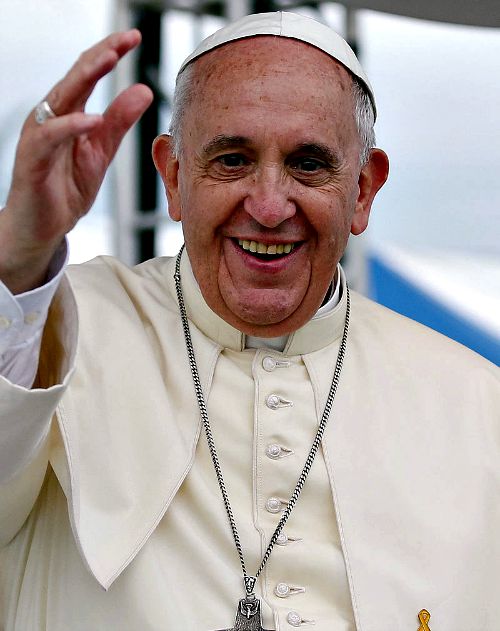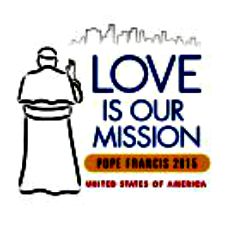Pope Francis Is Coming to America: What Will He Think?

Pope Francis is about to visit the United States for the first time. What will make the greatest impact on his short visit? From what I know about Pope Francis, I think he will be unimpressed by New York’s wealth and glamour and the power of Washington. Francis will focus on the unborn, the vulnerable, the immigrants and the marginalized in our society. One wonders: What will he make of his first face-to-face encounter with the American Catholic Church?
I was born and raised in the U.S., but I was never an American Catholic. Brought up in an evangelical-Protestant, fundamentalist home, I went to England after college and became an Anglican priest. Eventually, we were received into full communion with the Catholic Church, but remained in England for the next 10 years.
Then, in 2006, we moved to South Carolina in order for me to be ordained as a Catholic priest under the pastoral provision for married, former-Anglican priests.
Therefore, like Pope Francis, I came as a newbie to the Catholic Church in the United States. Never having been a Catholic in America, I came back with my eyes wide open. While I (like Francis) had my own set of prejudices, personal views and cultural filters, I was prepared to accept with curiosity and commitment the new Catholic culture into which I was being transplanted.

First, I was amazed and delighted to discover the history of the founding saints of the Church in the U.S. The stories of the first Franciscan missionaries like the Georgia martyrs and Father Junípero Serra were astounding. The lives of the Jesuit missionary martyrs to the Hurons and Iroquois were inspiring and astonishing, as was the life and witness of St. Damien of Molokai.
The women were as astounding as the men: Sts. Elizabeth Ann Seton, Frances Cabrini, Katharine Drexel, Marianne Cope and Rose Philippine Duchesne braved the hardships of frontier life to found schools, open orphanages and minister to lepers, immigrants, Native Americans and slaves.
The sacrifices of these saints — and many more — were the true foundation of the American Catholic Church.
As I learned more, I discovered the lives of great clerics — bishops and priests who lived missionary lives of great hardship and hard work. They built churches, founded seminaries, established monasteries and built schools, parishes and dioceses across the land at breakneck speed, with huge energy, boundless faith and an indomitable spirit and optimism that marks the best of American culture.
This same buoyant mix of compassion, faith and true grit continued right through the difficult days of the U.S. Civil War and on through two world wars.
I also discovered the post-Vatican II American Catholic Church. In the mid-’60s, rebellion hit the United States, and the Catholic Church was not spared. The Second Vatican Council was a great attempt for the Church to return to the basics and re-present the faith to the modern age.
A large segment of U.S. Catholics read into the Council the principles of revolution in the Church. Sated by affluence and brainwashed by modernism, many were caught up in the tsunami of cultural and sexual revolution. Dissenting Catholics voiced their opinions and established what I could only call an alternative church within a Church.
For the next 50 years, dissenting Catholics contradicted the Church on both doctrinal and disciplinary matters. Theologians and radical religious led the charge. Many once-loyal Catholic colleges tumbled to acquiesce to the spirit of the age and are now no longer recognizably Catholic. Others retain their Catholic name, but that identity is one of open dissent and activism against the historic faith.
I discovered that these alternative Catholics not only had their own colleges, but they had their own newspapers, publishing houses, monasteries, religious orders and seminaries.
I had discovered what reporter John Allen calls “American Catholic tribalism.” What I began to experience very quickly was that there are two churches that call themselves “Catholic” in America. They exist side by side in an uneasy alliance. It is an alliance that affects an outward unity, beneath which there is scarcely any unity at all.
For want of better names, these two churches might be called “Progressive” and “Conservative.” The progressives see the Church as an engine for social change and cultural transformation. The conservatives see the Church as an age-old means of sacramental life and the soul’s salvation.
In fact, the two objectives are not opposed, and it is a grave error to separate the two. As Pope Francis visits the United States, he exhibits the great gift of combining these two objectives. Passionate about peace and justice issues, he is just as passionate about the soul’s encounter with Christ and the need for salvation from sin. Francis’ missionary journey to these shores should remind us that the founding saints of America — Serra, Cabrini, Damien, John Neumann and others — also combined a passion for the poor and the eternal mission to save souls.
Francis’ own identity as the first pope from the Americas should be a witness to us. His powerful presence should remind us that it is only as we combine these two cross beams of mission that the deep divide in the Church will be healed and we will find our true voice and the energy, optimism and Spirit-filled chutzpah that has made the Catholic Church in the United States so great.
Father Dwight Longenecker is a priest of the
Diocese of Charleston, South Carolina.
His website is DwightLongenecker.com.
- Keywords:
- Sept. 20-Oct. 3, 2015

















